Wrongful Death
Woman Killed By Flyaway Manhole Cover on Southeast Expressway
 A woman died tragically this morning on the Southeast Expressway heading southbound, when a manhole cover became dislodged, went airborne, struck the front windshield and exited the rear windshield. She was killed instantly. The incident occurred in the Thomas P. O’Neill Junior Tunnel just before the southbound end of the tunnel.
A woman died tragically this morning on the Southeast Expressway heading southbound, when a manhole cover became dislodged, went airborne, struck the front windshield and exited the rear windshield. She was killed instantly. The incident occurred in the Thomas P. O’Neill Junior Tunnel just before the southbound end of the tunnel.
The woman’s vehicle came to a rest in the left-hand lane of the Southeast Expressway, a short distance from the Massachusetts Avenue exit, with large gaping holes in the front and rear windshields. A state police spokesperson commented that the cause of the manhole cover to become dislodged is under investigation.
The focus of the State Police investigation will be what caused the manhole cover to become a projectile which killed this unsuspecting driver. Manhole covers, when properly installed and maintained, should remain in place. It needs to be determined whether any work had been done recently on or around this manhole.
Attorney Marc Breakstone, who has litigated personal injury cases involving roadway defects and manholes, was interviewed by The Boston Globe.
“I’m guessing the rear wheel or wheels of a heavy vehicle passed over the manhole, catching the exposed lip of the cover, and from the traction of the tire dislodged and caused the cover to become a projectile which flew through the passenger compartment of this poor woman’s car,” he said, when interviewed a few hours after the accident. Read the full article.
The typical manhole used on our state highways is constructed of cast-iron or concrete or made out of a combination of the two. They typically weigh upwards of 110 pounds and are designed, once in place, to remain in place. The weight, shape and fit of manholes are designed to help keep them in place when traffic passes over them. This manhole cover may have become dislodged as a result of either improper placement, improper maintenance of the manhole and/or improper manufacture of the cover.
About Breakstone, White & Gluck
The Boston personal injury attorneys at Breakstone, White & Gluck have over 100 years combined experience representing clients in serious motor vehicle accident cases involving injuries and deaths due to defects in roadways and flying projectiles. If you have been injured, it is important to learn your rights. For a free legal consultation, contact us today at 800-379-1244 or 617-723-7676 or use our contact form.
Breakstone, White & Gluck Attorneys Named to Top 100 Massachusetts Super Lawyers List
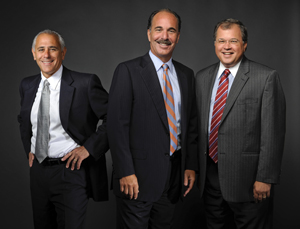 Our partners, Marc L. Breakstone, David W. White and Ronald E. Gluck, have been selected to various 2015 Massachusetts Super Lawyers lists, for their work in the practice areas of personal injury and medical malpractice.
Our partners, Marc L. Breakstone, David W. White and Ronald E. Gluck, have been selected to various 2015 Massachusetts Super Lawyers lists, for their work in the practice areas of personal injury and medical malpractice.
We are pleased to announce this honor. This is the 12th year in a row our attorneys have been selected to various Super Lawyers lists, a recognition of excellence. Super Lawyers, part of the Thomson Reuters company, makes annual selections using a multi-phase process of peer nominations, independent research and attorney evaluations. It only recognizes 5 percent of attorneys in each state.
The Massachusetts Super Lawyers lists are published online and in the November issue of Boston Magazine. You can also read more about our attorneys here:
Marc L. Breakstone
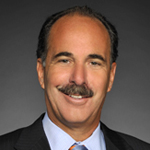 Attorney Breakstone was selected for these 2015 lists: Top 100 Massachusetts Super Lawyers and Massachusetts Super Lawyers, Top Rated Medical Malpractice Attorney.
Attorney Breakstone was selected for these 2015 lists: Top 100 Massachusetts Super Lawyers and Massachusetts Super Lawyers, Top Rated Medical Malpractice Attorney.
Attorney Breakstone has established a reputation as one of the top medical malpractice and personal injury lawyers in Massachusetts and New England. He has been selected to the Massachusetts Super Lawyers list for medical malpractice 12 years in a row, to the Top 100 Massachusetts Super Lawyers list nine times and to the Top 100 New England Super Lawyers list four times.
A graduate of Northeastern University School of Law, Attorney Breakstone has been practicing in Boston since 1986. He has represented clients who have been seriously injured by negligence, including in cases of wrongful death, medical malpractice, bus and truck accidents and propane gas explosions. Read his bio.
Attorney David W. White
 Attorney White was selected for these 2015 lists: Top 100 Massachusetts Super Lawyers and Massachusetts Super Lawyers, Top Rated Personal Injury – Plaintiff Attorney.
Attorney White was selected for these 2015 lists: Top 100 Massachusetts Super Lawyers and Massachusetts Super Lawyers, Top Rated Personal Injury – Plaintiff Attorney.
Attorney White is a Northeastern University School of Law graduate and has 30 years of experience representing victims of personal injury and insurance bad faith cases in Massachusetts. He is a past president of the Massachusetts Bar Association.
Attorney White has been named to the Massachusetts Super Lawyers list 12 years in a row. He has been included in the Top 100 Massachusetts Super Lawyers list seven times. He has also been named to the Top 100 New England Super Lawyers list three times.
White represents clients who have been seriously injured by car accidents, bicycle accidents, dog bites, product liability, construction accidents and other personal injury claims. Read his bio.
Attorney Ronald E. Gluck
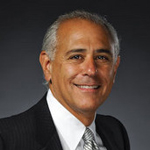 Attorney Gluck was named to these 2015 lists: Massachusetts Super Lawyers, Top Rated Personal Injury Attorney – Plaintiff Attorney and New England Super Lawyers, Personal Injury Attorney – Plaintiff Attorney.
Attorney Gluck was named to these 2015 lists: Massachusetts Super Lawyers, Top Rated Personal Injury Attorney – Plaintiff Attorney and New England Super Lawyers, Personal Injury Attorney – Plaintiff Attorney.
Attorney Gluck has consistently been named to the Massachusetts Super Lawyers list each year since 2005. He is a graduate of Boston College and Case Western Reserve University School of Law. Over his career, he has represented clients who have been seriously injured in complex cases involving wrongful death, car and trucking accidents, bicycle accidents, motorcycle accidents, liquor liability and product liability.
After 9-11, he represented victims of the World Trade Center attacks. He has also served as an expert witness on behalf of the United States Justice Department. Read his bio.
Snow Plow Accidents Have Killed Two People in Boston Area
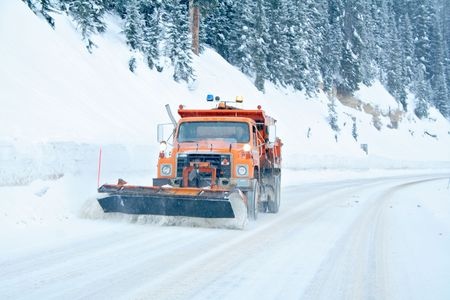 During the past few weeks, snow plows have had little rest in the Boston area and Central Massachusetts. For most of us, they have been part of the background noise of a harsh winter and we have not even noticed them. But as of this week, two pedestrians have died as a result of snow plow crashes in the Boston area. Please be aware of the risks and talk to your family members about how you can stay safe.
During the past few weeks, snow plows have had little rest in the Boston area and Central Massachusetts. For most of us, they have been part of the background noise of a harsh winter and we have not even noticed them. But as of this week, two pedestrians have died as a result of snow plow crashes in the Boston area. Please be aware of the risks and talk to your family members about how you can stay safe.
On Monday afternoon, a 60-year-old employee at a Whole Foods store in Medford was struck and killed while walking across the store’s parking lot. The employee was just leaving work. The area was not open to the public at the time. The snow plow was operated Yerardi Landscape and Design of Medfield, authorities said. The snow plow accident remains under investigation by Medford Police and the Massachusetts State Police.
A week ago, a 57-year-old Weymouth woman was struck and killed by a snow plow driver who was clearing the parking lot outside her condominium complex, Tara Gardens. The driver had just cleared the woman’s parking space for her and a friend told The Boston Globe she had gotten out of her vehicle to ask him not to block her vehicle in as he left. Weymouth Police and the Norfolk County District Attorney’s office are investigating the snow plow death.
We share a few safety tips:
1) Listen to Advisories. Follow the recommendations of state and local officials about when it is best to avoid walking or driving outside.
2) Wear Neon-Colored Vests and Bright Clothing. If you are walking in the street, a neon vest or bright clothing should be a requirement, even during the day. You want snow plow drivers, as well as other drivers, to see you.
Keep a vest in your car. You can use your vest when walking from your car to your destination. It may also come in handy someday if you break down.
3) Do Not Approach Plow Trucks. Pedestrians should never approach plow trucks. Let them stay focused on removing snow.
4) Contact the Property Owner Instead. If you live in an apartment or condo complex, keep the phone number of your building management company handy on your cell phone. If you have a complaint, take a photo to send to the building owner, who can share it with their plow company.
Do the same if you work at a business office, unless you are the owner; then safe snow removal is your responsibility.
5) Expect Plows Everywhere, Even After the Snow Ends. Expect plows everywhere for a while. Even when it is not snowing, expect plows will be out trimming down high snow banks and opening up narrow roads.
6) Do Not Follow Plow Trucks Too Closely. When driving, stay a few car lengths behind plow trucks. The snow plow could hit something hard unexpectedly and not be able to stop. Avoid passing snow plows.
7) If You Have An Accident with a Snow Plow Truck. If you are driving, make sure you stop in a safe place. As you do, take note of what the plow truck looks like and the license plate if you can do so safely. If the plow driver does not stop, immediately notify the local police department to file a car accident report.
City of Boston Will Inspect Addresses Where Students May Be Living in Overcrowded Conditions
 The City of Boston has identified 580 potentially overcrowded student apartments across the city from data provided by colleges and universities, The Boston Globe recently reported. City inspectors will now investigate whether the units are violating city zoning rules, which bar more than four full-time undergraduate students from sharing the same apartment.
The City of Boston has identified 580 potentially overcrowded student apartments across the city from data provided by colleges and universities, The Boston Globe recently reported. City inspectors will now investigate whether the units are violating city zoning rules, which bar more than four full-time undergraduate students from sharing the same apartment.
The city recently collected more than 25,000 student addresses from 31 colleges and universities so it can investigate potential apartment safety violations and overcrowding. If overcrowding is found, city officials plan to work with landlords and universities to move students to safer, alternate housing.
In 2013, Boston University student Binland Lee died in an apartment fire in Allston. She had been living at the Linden Street building with more than a dozen other people, a violation of city zoning rules. The Boston Globe Spotlight team later reported the property had been converted to a two-family home after a previous fire in the 1990s. This move blocked off a central staircase and restricted access. The building owner, Anna Belokourova, was later cited for running an illegal rooming house and not obtaining the permits needed to create bedrooms in the basement.
The Lee family has filed a wrongful death and premises liability lawsuit against Belokourova as well as Gateway Real Estate Group, which rented the apartment to her and six other housemates. Attorney Ronald E. Gluck of Breakstone, White & Gluck represented another woman who was seriously injured in the same fire.
In 2014, the Boston Globe Spotlight team investigated and found other instances of unsafe and crowded conditions for Boston students. It surveyed 266 students who lived off-campus in Boston and found nearly one-third were living in units with at least five undergraduate students, a violation of city zoning law.
Also from the survey:
- 25 percent of students reported having trouble reaching their landlord to report safety concerns
- 20 percent reported living without functioning smoke alarms
- 33 percent reported a lack of heat in their apartments
As these safety violations happen, more students are coming to Boston and living off-campus than in the past. Colleges are facing a space crunch and neighbors have opposed many of their efforts to build new dorms. The Boston Globe estimated more than 45,000 Boston students lived in off-campus housing in 2013, a 36 percent increase from 2006.
Our attorneys have represented Boston college students and other tenants who have suffered serious injuries as a result of housing code violations and overcrowding conditions. Here are summaries from two recent cases:
Overcrowded Student Housing Fire in Allston, Massachusetts
Our attorneys represented a woman who was seriously injured in a 2013 fire in an illegal apartment in Allston, Massachusetts. More than a dozen college students were living at the home in violation of city zoning ordinances. Read about this case.Students Injured in Escape from Quick-Spreading House Fire
Our attorneys represented one of two college students who were seriously injured a single-family home fire in Boston. One student suffered a brain injury when he jumped from a third-floor window to escape and landed on a concrete driveway. The other student broke her back and injured her ankle when she jumped off from the second floor. The case was settled at mediation. The case was reported by Massachusetts Lawyers Weekly on May 29, 2014. Subscription required.
Brockton Pedestrian Accidents Surge, City Officials Unveil Safety Plan
 The mayor of Brockton has announced a plan to improve safety for those walking in the city. The city has seen an increase in pedestrian accidents, which have recently killed 8 pedestrians and injured 75 others. Seven of the eight pedestrian deaths have occurred since August 12.
The mayor of Brockton has announced a plan to improve safety for those walking in the city. The city has seen an increase in pedestrian accidents, which have recently killed 8 pedestrians and injured 75 others. Seven of the eight pedestrian deaths have occurred since August 12.
Two victims were children, and in one case, police are still searching for the hit-and-run driver. In 2013, the city saw one fatal pedestrian accident.
Mayor Bill Carpenter proposed the safety plan on Monday, which draws on resources from a number of state and local agencies, including the Massachusetts State Police, Brockton Police, the city’s Board of Health, the Massachusetts Department of Transportation, the Safe Routes Alliance and Brockton Area Transit.
His plan will focus on three areas: engineering, enforcement and education. Some of the measures still require approval from the city Finance Committee.
Educational Awareness Campaign. The city will launch a pedestrian safety awareness campaign to educate both drivers and pedestrians. One focus will be to reduce use of electronic devices and cell phones by everyone on the road. Public service announcements, video documentaries and other safety materials will be introduced to students in Brockton Public Schools.
Increased Walking Patrols. These will be expanded in high-traffic areas, to allow officers to provide pedestrians and cyclists with safety information when they put themselves in harm’s way.
Increased Traffic Patrols in High-Crash Areas. The Massachusetts State Police will work with Brockton to increase patrols in high traffic areas.
Scarecrow Patrol Cars. Brockton Police will deploy “scarecrow” cruisers at some dangerous intersections. These have no officers, but are meant to put drivers who do not know that on alert.
Clearing Sidewalks. The city’s Board of Health will conduct enforcement to make sure sidewalks are clear and can be safely used by pedestrians.
Traffic Signals. The city will consider adding pedestrian countdown features to the traffic signals on Belmont Street. At the same time, the Mass Department of Transportation is now conducting a review of traffic signals across the city.
Brockton is not the only community which has seen an increase in pedestrian accidents. Nationwide, fatal pedestrian accidents increased 6 percent from 2011 to 2012, according to the National Highway Traffic Safety Administration’s most recent figures. More than 33,000 were killed or about one every two hours.
Cyclist accidents are also on the rise, with a 16 percent increase from 2010 to 2012, according to the Governors Highway Safety Administration.
Read More
Former Employees: Takata Hid Airbag Defects
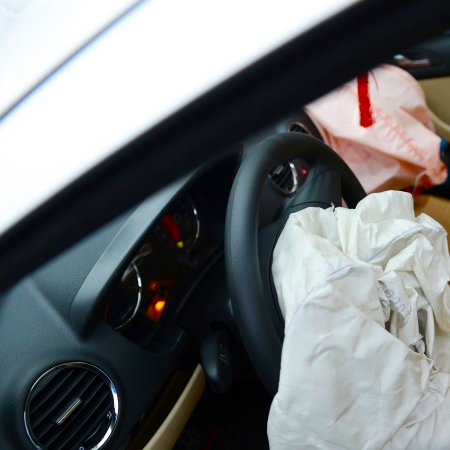 Long before the deaths and injuries, Takata knew its airbags were defective, according to two former employees of the company.
Long before the deaths and injuries, Takata knew its airbags were defective, according to two former employees of the company.
In fact, Takata knew about the defects as far back as 2004, the workers told The New York Times. The Japanese company learned one of its airbags exploded and sent metal debris spewing at a driver in Alabama, then began secret testing at its U.S. headquarters in Michigan. The testing was conducted outside normal work hours and was never disclosed until now. Three months into testing, employees began to theorize the problem was the welding on the airbag’s inflator canister, but the investigation was shut down and employees were instructed to destroy all testing data.
It took Takata four years to report the faulty airbags in a regulatory filing. In November 2008, the first Takata airbags were recalled.
The law requires car manufacturers to report safety defects to the government within five days once they are identified. This year has seen the most auto recalls in U.S. history and some hefty fines for Toyota and General Motors for failing to disclose defects. In March, Japan-based Toyota agreed to pay $1.2 billion to the U.S. government to avoid prosecution for hiding “unintended acceleration” defects. In May, General Motors was ordered to pay a record $35 million civil fine for failing to disclose deadly ignition switch defects.
Starting in 2008, Takata’s airbag recalls continued slowly, then got a big push last month from the National Highway Traffic Safety Administration (NHTSA). NHTSA issued a consumer advisory which urged drivers to immediately check if their vehicle’s airbags had been recalled and arrange for a repair. To date, 11 car manufacturers have recalled more than 14 million vehicles worldwide. Four deaths have been linked to the defective airbags and at least 139 people have been injured.
A few notes about this story:
Check Your Car. Every driver should check if their car has been recalled at SaferCar.gov. You can also read our blog for answers to many common consumer questions. Most impacted drivers will have to wait for replacement airbags so it is best to call your local dealer as soon as possible. Some carmakers are advising drivers not to carry passengers until their airbags have been replaced.
Why the Airbags are Defective. The airbags are defective because they have a steel canister which can crack when the device deploys in a car crash, sending metal, plastic and chemicals exploding at drivers and front seat passengers. The airbags have an inflator, which is comprised of a propellant based on a common compound used in fertilizer.
Honda. One question going forward is: How much did Honda know? This matters because Honda made more than 5 million of the recalled vehicles. The New York Times reports a 2002 Honda Accord was involved in the 2004 accident in Alabama. Honda officials say Takata assured them the accident in which a driver was injured by a ruptured airbag was an “anomaly.” Honda settled the case with the driver but Takata began its own secret testing, according to the employees. The NHTSA has ordered Honda to produce all its documents related to the Takata airbag recall by Dec. 15, so we may learn more then.
About Breakstone, White & Gluck
The Boston product liability lawyers at Breakstone, White & Gluck have over 100 years combined experience representing clients injured by negligence in Massachusetts. If you have been injured, learn your rights. For a free legal consultation, contact us at 800-379-1244 or 617-723-7676 or use our form.
General Motors’ $35 Million Fine Starts Years of Investigations, Wrongful Death Lawsuits
General Motors (GM) has been fined $35 million for waiting a decade to recall vehicles with faulty ignition switches. The defects have now been linked to 13 deaths.
Attorney David White of Breakstone, White & Gluck appeared on Fox 25 TV in Boston last week to discuss the fine, GM’s recent bankruptcy proceedings and his thoughts about handling recall notices.
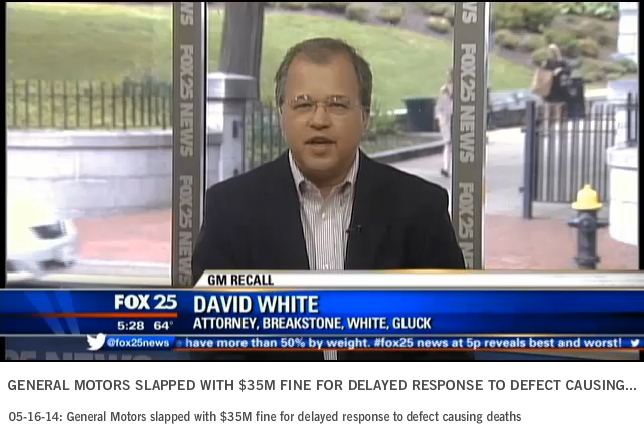
This is an important topic because we have seen many auto recalls in recent years, but 2014 may set the record, according to this Los Angeles Times article.
White said the fine is the first step in a long process ahead.
“Really this is just a slap on the wrist for the corporation,” White said. “It’s a civil fine. It’s the maximum civil fine that they could be exposed to at this point, but GM is looking at years of investigation and probably… maybe even billions of dollars of fines down the road.”
The federal government is sending a strong message that companies need to act within 5 days of learning of safety defects, as required by law, White said.
“Hopefully other automakers get this message and they tune into the need for greater safety, greater attention to safety,” he said. “When they do find a defect, they come right out and say here’s our defect, here’s our concern so consumers can get notice of it promptly and get it fixed.”
Read More
Nearly 50 Massachusetts Workers Lost Their Lives on the Job in 2013
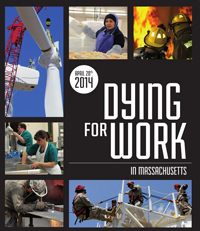 A new report shares hard numbers for Massachusetts workers. In 2013, 50,000 workers were seriously injured on the job and 48 others were killed in workplace accidents. An estimated 480 workers also died from occupational disease, such as cancer from workplace exposure to hazardous materials.
A new report shares hard numbers for Massachusetts workers. In 2013, 50,000 workers were seriously injured on the job and 48 others were killed in workplace accidents. An estimated 480 workers also died from occupational disease, such as cancer from workplace exposure to hazardous materials.
The 2014 “Dying for Work in Massachusetts” report has been released by the Massachusetts Coalition for Occupational Safety and Health (MassCOSH) and the Massachusetts AFL-CIO, which organize the annual Workers’ Safety Memorial Day. On April 28, workers, families of victims, advocates and state officials gathered at the Massachusetts State House for the 26th annual observance.
48 Workers Killed in 2013. The construction industry remains one of the most dangerous, with 11 workers killed in construction accidents in 2013. Workplace falls killed nine workers, causing one-fifth of all occupational fatalities in Massachusetts. Nine other Massachusetts workers were killed by machines and equipment. Workplace violence took the lives of five more workers, including a teacher, a police officer, a livery driver and two store workers.
Commercial fishing accidents killed two fishermen. MassCOSH considers this to be the most dangerous single occupation in Massachusetts. Since 2000, 60 people have died in this work.
The figure also includes nine firefighters who were killed by work-related cancers and heart disease and three servicemen who died in the War in Afghanistan.
Occupational Disease. MassCOSH reports on occupational disease which can develop after an employee is exposed to hazardous materials and dangerous dust. Because symptoms do not immediately present, some conditions are left untreated. Statewide, 480 workers died from occupational disease last year, while another 1,800 were diagnosed with cancers for the first time.
Immigrant Workers. More immigrants died at work last year. In 2012, nine percent of on-the-job deaths were immigrants. In 2013, this figure increased to 19 percent – or nine workers. MassCOSH reports the state’s immigrant workers come from all over the world, including Sir Lanka, El Salvador, India, Angola, Vietnam, Ireland, Cape Verde and Algeria.
Older Workers Face Greater Risk. Workers over age 40 were also at greater risk. The average age of workers who died was 49. The majority – 56 percent – were age 50 or older. Workers over age 60 accounted for 17 percent workplace deaths and construction accident deaths.
OSHA Would Need 123 Years to Fully Investigate in Massachusetts. MassCOSH says OSHA lacks proper funding to investigate and with current resources, would need over 123 years to investigate every Massachusetts workplace under its jurisdiction.
Fines Are Too Small. MassCOSH says fines do little to deter companies from taking safety risks. In 2013, OSHA investigated the deaths of four workers in Massachusetts. All but one settled for $10,000 or less, with an average fine of $6,577.
Related Resources
To learn more, read the MassCOSH annual report, “Dying for Work in Massachusetts: The Loss of Life and Limb in Massachusetts Workplaces.” Page 9 is an “In Memoriam” tribute to the workers who died in 2013.
About Breakstone, White & Gluck
The Boston injury lawyers at Breakstone, White & Gluck support MassCOSH in its work to strengthen laws for worker safety. Our attorneys have over 100 years combined experience representing injured individuals in Massachusetts, including those who have been seriously injured or killed in construction accidents. If you or a loved one have been injured, it is important to learn your rights. For a free legal consultation, contact us at 800-379-1277 or 617-723-7676 or use our contact form.
Toyota, GM and Mazda Make New Headlines for Safety Recalls
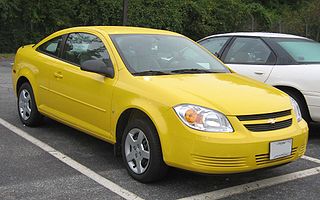 Toyota issues its second largest safety recall ever while GM CEO addresses Congress and Mazda reports a new web of problems
Toyota issues its second largest safety recall ever while GM CEO addresses Congress and Mazda reports a new web of problems
Toyota has more bad news for drivers. Just a few weeks ago, Toyota agreed to pay a record $1.2 billion criminal penalty to the federal government. The Japanese automaker, which has recalled over 9 million vehicles worldwide in recent years, recalled another 6.4 million vehicles on Wednesday for steering, airbag and other safety defects. This is the company’s second largest single recall announcement. Toyota states that it is not aware of any crashes or injuries involving these defects.
In March, Toyota agreed to pay the $1.2 billion criminal penalty to federal government for misleading consumers and the government about unintended acceleration in its cars and trucks. The Justice Department had charged Toyota with wire fraud, but agreed to defer the criminal charge for three years while the company submits to government monitoring.
This week’s recalls involve 27 Toyota models, including the RAV4 and Yaris. The largest recall involves 3.5 million vehicles which have defective spiral cables that can be damaged when the steering wheel is turned. Other defects involve a seat rail that can be pushed forward in a crash, as well as faulty steering column brackets, windshield wiper motors and engine starters.
GM ignition defects draw Congressional inquiry. Last week, General Motors CEO Mary Barra was questioned by Congress about faulty ignition switches in GM vehicles, and about her company’s slow response to protecting the public after learning about at least 13 deaths linked to the defect. GM has recalled over 2.5 million vehicles which may be equipped with the faulty ignition switch.
A week later, the National Highway Traffic Safety Administration (NHTSA) is waiting on more answers from General Motors. It reports the company has failed to respond to more than a third of its written questions. The company is being fined $7,000 each day for failing to fully respond, and the NHTSA is expected to hand the matter over to the Justice Department shortly.
Spiders and hoses and gas, oh my! Mazda also issued a recall this week, one involving an unusual, but familiar safety problem. For the second time in three years, Mazda has recalled 42,000 Mazda6 sedans. This recall involved vehicles from 2010, 2011 and 2012.
The problem is the yellow sac spider. The spiders are attracted to the smell of gasoline and can weave a web in the evaporative fuel hose, causing pressure to build up in the fuel tank. Too much pressure can cause fuel tank cracks, leaks and fires.
In 2011, Mazda had recalled 65,000 Mazda6s from 2009 and 2010 for this defect. The car manufacturer attempted to remedy the defect by installing a spring inside the vehicle’s fuel line, but recently reported nine cases in which this was not adequate. The company is not aware of any fires due to the defect, but will now notify car owners. The remedy requires checking of the evaporative canister vent line and software reprogramming.
Read More
Will Toyota Criminal Penalty Improve Safety?
 Toyota agreed last week to pay a record $1.2 billion criminal penalty for misleading consumers and the government about unintended acceleration in its vehicles. This safety defect and others have resulted in numerous injuries and deaths. Over 10 million Toyota vehicles have been recalled so far.
Toyota agreed last week to pay a record $1.2 billion criminal penalty for misleading consumers and the government about unintended acceleration in its vehicles. This safety defect and others have resulted in numerous injuries and deaths. Over 10 million Toyota vehicles have been recalled so far.
This is the largest criminal penalty ever imposed on a car manufacturer. As part of the agreement, the Justice Department charged Toyota with wire fraud but deferred the criminal charge for three years while the company submits to government monitoring.
We have been reading about Toyota’s safety defects for many years now, along with the more important violation of trust: the Japanese automaker repeatedly failed to warn the public about safety problems. CNN reported last week that the company “at one point boasted internally about saving $100 million in costs by avoiding a full safety recall.”
To date, Toyota has paid out more than $66 million in fines for not immediately reporting defects. Several of these fines have been record-breaking. In 2010, the National Highway Traffic Safety Administration fined the company a record $16 million for its delayed response in notifying the government about defects. In 2012, the NHTSA fined the company an additional $17.4 million.
The company has faced numerous injury and wrongful death lawsuits. In addition to sticky pedals and unintended acceleration, unsecured floor mats and other equipment have caused safety hazards. Last October, an Oklahoma jury decided that defective electronics were to blame for a car accident which killed a woman and seriously injured another person. Toyota was ordered to pay $3 million in damages.
As for Toyota, U.S. Attorney General Eric Holder told the Detroit Press: “Put simply, Toyota’s conduct was shameful. It showed a blatant disregard for systems and laws designed to look after the safety of consumers. By the company’s own admission it protected its brand ahead of its own consumers.”
Still, consumers have continued to buy Toyota. The company was the top-selling automaker in 2012 and 2013, selling 9.98 million vehicles in 2013.
Related:
Toyota to pay $1.2 billion in settlement with U.S. over recalls, CNN.
Read More

